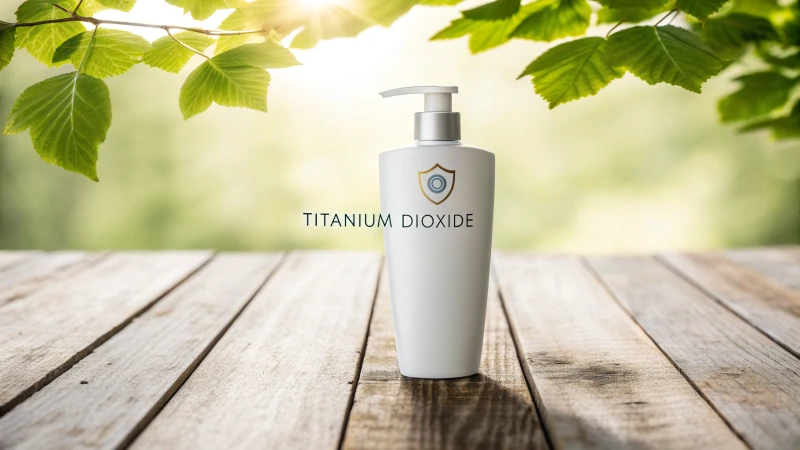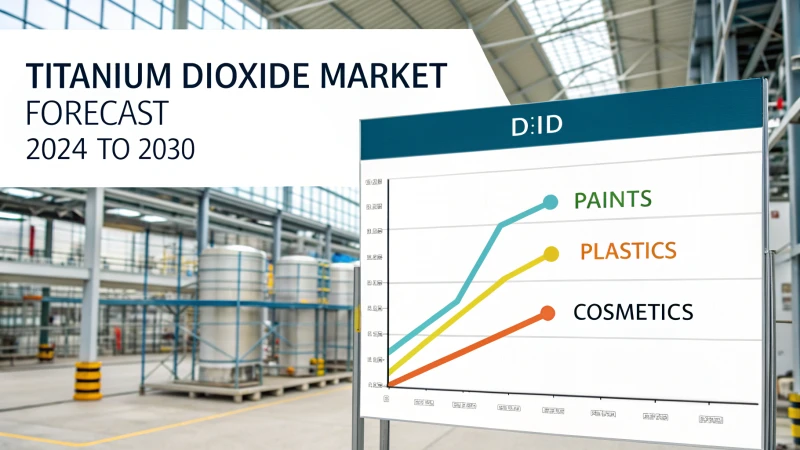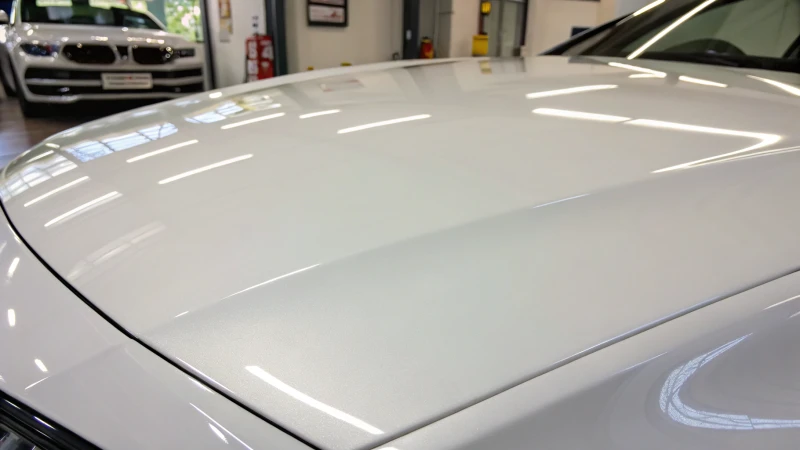
Ever wonder why titanium dioxide is the go-to choice in coatings? Let’s uncover its magic together.
Titanium dioxide amps up coatings with outstanding whiteness, exceptional hiding power, and top-notch weather resistance, making it a must-have for high-quality finishes. It effectively scatters light, delivering incredible opacity and brightness, which is crucial for cutting production costs and boosting product durability.
While these are the highlights of titanium dioxide’s benefits, there’s so much more to its story. I remember my first deep dive into the coatings industry; I was fascinated by how a single pigment could revolutionize so many aspects of product performance. Whether it’s the choice between Anatase or Rutile types or its cost-effectiveness in various applications, understanding these nuances can truly enhance product development. Let’s dig deeper into what makes this pigment a standout star in the world of coatings.
[claim claim=”Titanium dioxide is used for its superior whiteness in coatings.” istrue=”true” explanation=”Titanium dioxide provides excellent whiteness, enhancing coating aesthetics.”]
[claim claim=”Titanium dioxide reduces the durability of coatings.” istrue=”false” explanation=”It actually improves durability by increasing weather resistance.”]
How Does Titanium Dioxide Boost Coating Durability?
Ever wondered how a tiny bit of titanium dioxide can make your paint last longer and look better? It’s all about its magical ability to resist wear and tear.
Titanium dioxide improves coating durability by enhancing hiding power, weather resistance, and dispersibility. These properties ensure longer-lasting coatings that resist environmental damage and maintain visual appeal over time.
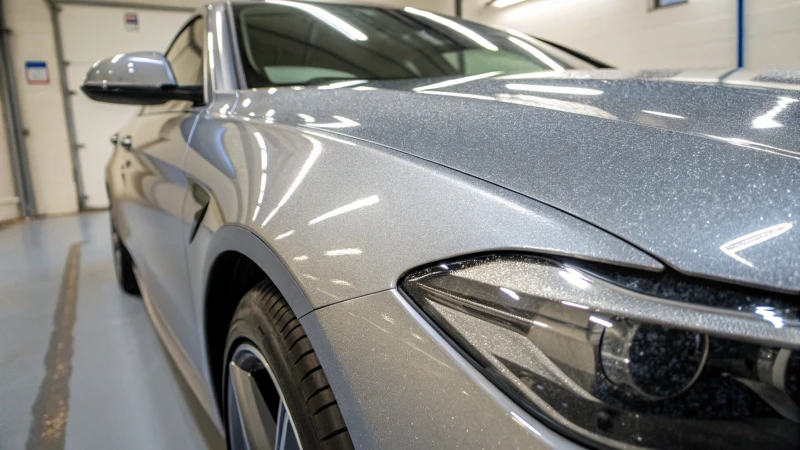
The Role of Hiding Power
I remember the first time I was tasked with choosing the right paint for a big home project. I was overwhelmed by options until I learned about the importance of hiding power. With titanium dioxide, a thinner coat can cover imperfections beautifully, saving time and resources. The rutile type1 is especially effective due to its high refractive index, offering better opacity compared to the anatase type.
| Type | Refractive Index | Hiding Power |
|---|---|---|
| Rutile | High | High |
| Anatase | Lower | Lower |
Enhancing Weather Resistance
Living in a sunny area, I’ve seen firsthand how relentless the sun can be on outdoor surfaces. That’s where titanium dioxide’s UV protection comes in handy. It shields paint from harsh sunlight, preventing it from fading and cracking. This is crucial for anyone who, like me, values their home’s curb appeal in sunny climates. Understanding the UV resistance2 offered by titanium dioxide helps manufacturers tailor coatings for different environments.
Improving Dispersibility
Good dispersibility in coatings is something I came to appreciate after noticing uneven finishes in some DIY projects. Properly dispersed titanium dioxide ensures an even, smooth coat that not only looks great but also performs well over time. Plus, it cuts down on energy use during production, which is a win-win for efficiency and sustainability. Exploring industry best practices on dispersion techniques3 can offer valuable insights.
Key Takeaways on Titanium Dioxide in Coatings
- Hiding Power: Influences film thickness and paint usage.
- Weather Resistance: Offers protection against UV rays, enhancing durability.
- Dispersibility: Affects overall application quality and production efficiency.
Each of these factors plays a crucial role in creating durable coatings that meet industry standards and client expectations.
[claim claim=”Rutile titanium dioxide has higher hiding power than anatase.” istrue=”true” explanation=”Rutile type has a higher refractive index, providing greater opacity.”]
[claim claim=”Titanium dioxide reduces UV protection in coatings.” istrue=”false” explanation=”It enhances UV protection, preventing degradation from sunlight.”]
Why Is Titanium Dioxide Essential for Achieving High Opacity?
Ever wondered why titanium dioxide is the unsung hero in paints, giving them that perfect, vibrant finish? Let me take you on a journey into its fascinating world!
Titanium dioxide’s high refractive index and light-scattering prowess make it crucial for high opacity in paints and coatings. Its ability to ensure vibrant color and superior coverage sets it apart from other pigments, making it indispensable in achieving that flawless finish.
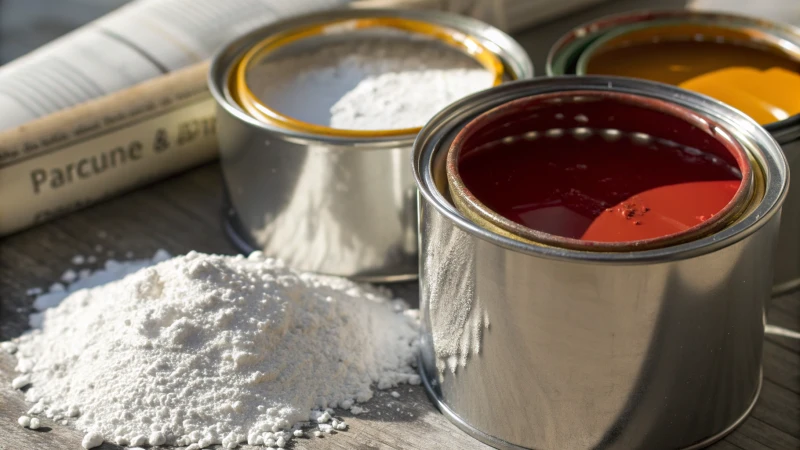
Understanding Titanium Dioxide’s Optical Properties
I remember the first time I discovered titanium dioxide’s magical powers. It was during a project where I needed the perfect paint for a client’s vibrant mural. I learned that its secret lies in its refractive index4, which is significantly higher than other pigments. This property allows titanium dioxide to scatter light like no other, offering unmatched coverage.
| Property | Value |
|---|---|
| Refractive Index (Rutile) | 2.7 |
| Refractive Index (Anatase) | 2.5 |
The Rutile form, with its higher refractive index, often became my go-to choice for exterior projects due to its brilliance.
Application in Different Industries
Coatings and Paints: Back in my early days, I was amazed at how titanium dioxide transformed the coatings industry. Its hiding power5 meant we could use less paint while achieving a flawless finish, saving costs and time.
Plastics: I also worked with plastic manufacturers who swore by titanium dioxide for enhancing opacity and brightness. Its excellent dispersibility ensures even color distribution, a game-changer for quality control.
Factors Affecting Performance
Several factors can tweak how titanium dioxide performs, like particle size and surface treatment. From my experience, smaller particles ramp up opacity but can impact glossiness, something I had to balance delicately in various projects.
Particle Size Analysis:
| Particle Size | Opacity | Glossiness |
|---|---|---|
| Small | High | Low |
| Large | Low | High |
Surface Treatment: Enhancing durability6 with coatings on titanium dioxide particles was another trick I learned. This improved weather resistance, crucial for long-lasting applications.
Comparison with Other Pigments
In my experience, when stacked against white pigments like zinc oxide, titanium dioxide consistently delivered superior opacity and brightness. Its cost-effectiveness7 and versatility have made it a staple across industries I’ve worked with. From paints to plastics and more, its unique properties ensure it remains an essential component in achieving high opacity.
[claim claim=”Titanium dioxide has a refractive index of 2.7 in Rutile form.” istrue=”true” explanation=”Rutile titanium dioxide’s refractive index is 2.7, enhancing opacity.”]
[claim claim=”Large titanium dioxide particles increase glossiness.” istrue=”true” explanation=”Larger particles result in lower opacity and higher glossiness.”]
Why is Titanium Dioxide a Cost-Effective Choice for Paint Manufacturers?
Have you ever wondered why titanium dioxide is a go-to choice for paint manufacturers?
Titanium dioxide stands out as a cost-effective choice for paint manufacturers due to its remarkable opacity, brightness, and durability. These qualities allow for less pigment use, effectively lowering production costs while still delivering high-quality paint that lasts.

Superior Opacity and Coverage
I remember the first time I learned about the magic of titanium dioxide. It was during a meeting with a seasoned paint manufacturer who described it as "painting with light." The way it transforms a thin layer of paint into something that covers so thoroughly is nothing short of alchemy. This exceptional opacity means we can use less material to achieve a smooth, even finish. The technical bit? It all boils down to its refractive index—higher in the rutile type, which we prefer for its outstanding hiding power and durability.
| Property | Anatase Type | Rutile Type |
|---|---|---|
| Refractive Index | Lower | Higher |
| Hiding Power | Lower | Higher |
| Durability | Lower | Higher |
Rutile type is preferred due to its superior opacity and durability8.
Durability and Weather Resistance
Paint that stands the test of time is every homeowner’s dream and every manufacturer’s promise. Titanium dioxide delivers just that, especially in exterior applications. Its resilience against light and harsh weather conditions means fewer touch-ups and reapplications. I once had a client in Turkey, Timothy, who was thrilled because his exterior paints looked as fresh as the day they were applied, even after several seasons.
- Light Resistance: Reduces fading
- Weather Resistance: Withstands harsh conditions
These factors minimize maintenance costs and prolong the paint’s lifespan.
Enhanced Brightness and Color Retention
There’s something special about the way titanium dioxide enhances brightness and retains color. I love how it keeps those vibrant hues from fading or yellowing over time. It’s like having an artist’s touch in every can of paint. Curious about how brightness affects paint quality? You might want to explore this further9.
Efficient Dispersibility
Efficient dispersibility is like the secret sauce that keeps production smooth and costs low. Poor dispersibility can be a real headache, leading to higher energy consumption and equipment wear. Thankfully, titanium dioxide mixes effortlessly, saving both time and resources in the long run.
- Reduced Energy Consumption: Efficient mixing processes
- Equipment Longevity: Less wear and tear during production
If you’re interested in the nitty-gritty of why dispersibility matters, consider reading about its importance10 in optimizing manufacturing processes.
Economic Impact on Production
Every little bit saved counts, right? With titanium dioxide improving hiding power, manufacturers need less pigment to get the desired coverage. This simple fact leads to significant cost savings, making it a smart economic choice.
For more insights into reducing production costs11, explore strategies that make the most of titanium dioxide’s properties.
Understanding these aspects can empower manufacturers to make informed decisions, optimizing both cost and quality in paint production. It’s all about striking that perfect balance.
[claim claim=”Rutile titanium dioxide has higher hiding power than anatase.” istrue=”true” explanation=”Rutile type has a higher refractive index, enhancing its hiding power.”]
[claim claim=”Anatase type is preferred for exterior paint durability.” istrue=”false” explanation=”Rutile is preferred for exterior paints due to superior durability.”]
How Do Different Types of Titanium Dioxide Affect Coating Performance?
Ever wondered how a seemingly simple ingredient like titanium dioxide can make such a difference in the world of coatings?
Choosing between anatase and rutile titanium dioxide is crucial for optimizing coating performance. Rutile, with its higher refractive index and stability, is ideal for exterior applications due to its durability and hiding power, while anatase suits indoor uses where these factors are less critical.

Understanding Titanium Dioxide Types
When I first started exploring the world of coatings, titanium dioxide seemed like just another chemical compound. Little did I know, it comes in two primary forms: anatase and rutile. These types differ in their crystal structure12, which significantly impacts their properties and suitability for various applications.
| Type | Refractive Index | Stability | Common Uses |
|---|---|---|---|
| Anatase | Lower | Moderate | Indoor coatings |
| Rutile | Higher | High | Exterior coatings |
Anatase vs. Rutile: Key Differences
Refractive Index and Hiding Power
I’ll never forget my first big project where I discovered the economic benefits of using rutile titanium dioxide. With its higher refractive index, rutile enhances hiding power, meaning less pigment is needed to achieve the same opacity. This can lead to significant savings, especially in large-scale manufacturing processes13. Meanwhile, anatase is less dense and perfect for places where super high durability isn’t a must.
Durability and Weather Resistance
Picture this: You’re painting a lovely garden shed. If you want that fresh look to last through seasons of weather changes, rutile’s dense structure offers superior protection against UV radiation and weathering, making it your go-to for outdoor coatings.
Cost Considerations
I’ve often debated with clients about the cost-effectiveness of rutile. Yes, it might be pricier up front due to its robust properties, but its long-term benefits—like reduced maintenance and extended lifespan—often justify the investment. Conducting a comparative cost analysis14 can really help in determining the best choice for specific needs.
Application Areas
- Indoor Coatings: Personally, I love how anatase is often selected for its lighter tone and lower cost, making it perfect for indoor applications where weather resistance isn’t as critical.
- Exterior Coatings: Meanwhile, rutile’s higher durability makes it the clear choice for surfaces exposed to the elements.
Understanding these differences can significantly impact decision-making in coating formulation. Selecting the right type of titanium dioxide can enhance product performance, reduce costs, and meet specific application needs effectively.
By leveraging the unique properties of anatase and rutile, manufacturers can tailor their coatings to achieve desired outcomes in both performance and cost-efficiency. Every time I help a client find that perfect balance, it’s like solving a satisfying puzzle—one that brings their vision to life.
[claim claim=”Rutile titanium dioxide is ideal for exterior coatings.” istrue=”true” explanation=”Rutile offers superior UV protection and weather resistance, making it suitable for outdoors.”]
[claim claim=”Anatase is more expensive than rutile titanium dioxide.” istrue=”false” explanation=”Anatase is less costly due to lower durability and refractive index.”]
Conclusion
Titanium dioxide enhances coatings with superior whiteness, hiding power, and weather resistance, making it essential for high-quality finishes in various industries like paints and plastics.
-
Learn why rutile type is preferred for its superior refractive index and hiding power. ↩
-
Explore how titanium dioxide’s UV resistance enhances coating durability. ↩
-
Discover techniques to optimize dispersion, improving coating quality and reducing costs. ↩
-
Understanding the refractive index of titanium dioxide helps grasp why it’s so effective at scattering light. ↩
-
Exploring hiding power clarifies how titanium dioxide achieves opacity efficiently. ↩
-
Discover how surface treatment enhances the performance of titanium dioxide in various applications. ↩
-
Evaluating cost-effectiveness shows why titanium dioxide remains a preferred pigment choice. ↩
-
Explore why Rutile type is preferred for its high hiding power and durability. ↩
-
Discover how brightness enhances color vividness in paints. ↩
-
Learn why efficient dispersibility is crucial for reducing costs. ↩
-
Uncover methods to optimize production costs using titanium dioxide. ↩
-
Explore how the distinct crystal structures influence performance characteristics in coatings. ↩
-
Learn why refractive index is critical in determining a pigment’s opacity in coatings. ↩
-
Understand the economic impact of choosing between anatase and rutile for different applications. ↩




